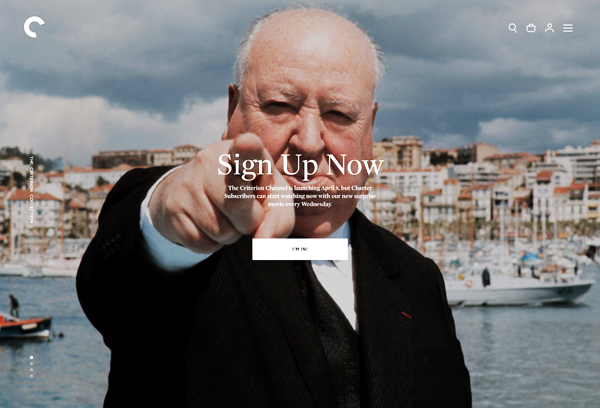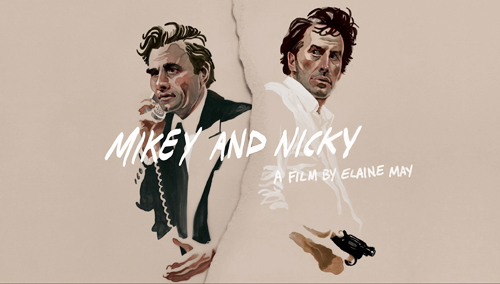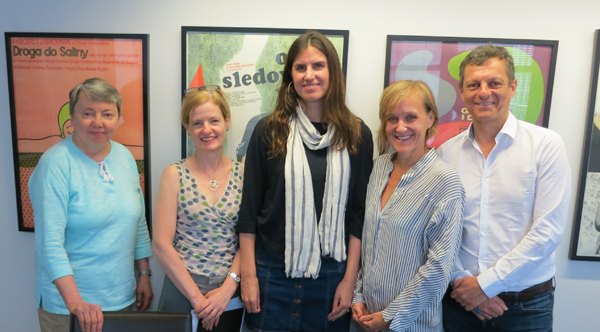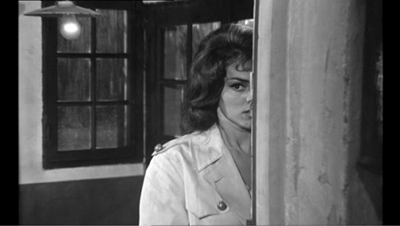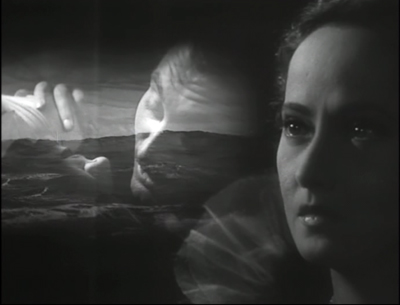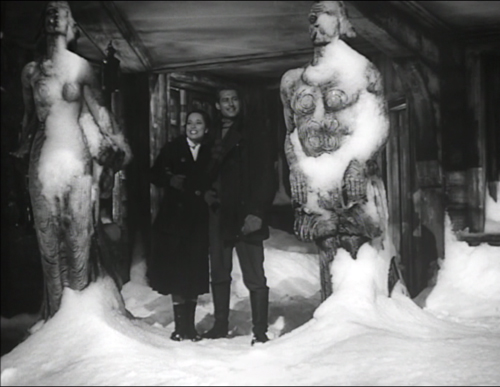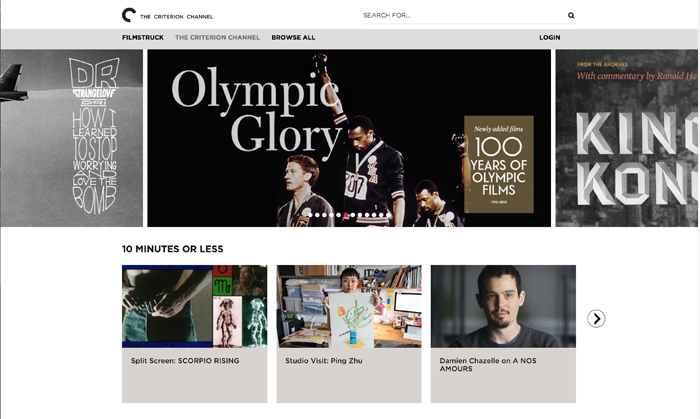Archive for the 'Criterion Channel' Category
Love on your menu: CHUNGKING EXPRESS on the new Criterion Channel
DB here:
Signed up as a Charter Member of the relaunched Criterion Channel? Good. Now you can stream the Movie of the Week: Chungking Express, one of the favorite films of nearly everybody I know.
It’s streaming with Tony Rayns’ excellent commentary, personal reflections from Barry Jenkins, and an installment in our series Observations on Film Art. Just running the trailer will get you worked up.
If you haven’t signed on and you live in the US or Canada, you should get your free trial pronto. The 30-day trial period doesn’t even start till the official launch on 8 April. That’s two months off, meaning many more totally free, tightly curated Movies of the Week to come.
Wonder what next week’s feature will be? Me too. It will drop, as everybody but me now says, on Wednesday. And Chungking will vanish. But just for a while, until the full collection bursts on the world in April. Then you can run Chungking Express every day if you want. Not the worst plan I’ve heard.
Thanks as usual to all the Criterionistas, especially Peter Becker and Kim Hendrickson.
I wrote a personal note on Chungking Express when it first surfaced on the FilmStruck platform of the Criterion Channel.
The Criterion Channel is back!
Sir Alfred wants YOU.
DB here:
Excellent news for film lovers! The new Criterion Channel has a launch date: 8 April for the US and Canada. Go here for details.
There you’ll learn that Criterion is already offering a series you can tap into right now. Every Wednesday until launch there will be a new Movie of the Week, along with extras, that you can watch on your favorite device. This week it’s Elaine May’s Mikey and Nicky. I haven’t seen it since its first release and now it’s a must for me.
This coming Wednesday the next Movie of the Week is….well, let’s just say it’s one of the most popular offerings on the Criterion channel, and now a very rare item on DVD.
Media mavens will recall that this reincarnation of the Channel is the result of AT&T’s acquisition of TimeWarner, and hence of TCM. TCM had created the streaming bounty that was FilmStruck, which partnered with the Criterion Channel. But AT&T decided to drop FilmStruck, along with other streaming services it considered niche.
What, some asked, happens when ATT constitutes its own streaming service in the fall, as announced? The trade papers have reported that AT&T/WarnerMedia will offer a three-tiered platform emphasizing blockbusters and recent releases.
By contrast, the new Criterion Channel aims to reconstitute the lush landscape of FilmStruck. It will of course showcase films from the Janus/Criterion library (numbering over 1000 titles), but it will also program films from all the major US studios (and some overseas ones). Those items will include Hollywood classics, independent releases, and major titles, old and new, drawn from international film culture.
Criterion Channel apps won’t launch until April 8. Until then the Channel is available through any web browser, desktop or mobile, and, through a workaround detailed in the HELP screens, on many Roku, Apple TV and some Android TV devices.
When it goes live, the new Channel will be packed with all Criterion’s trademark treats. There will be the interviews and making-ofs, the shorts and supplements, the archival discoveries and the running features like Adventures in Moviegoing and Arthouse America and Observations on Film Art (ahem). There will be filmmaker and actor spotlights as well as genre and thematic clusters. In other words, the hundreds of cinematic treasures will be curated and contextualized in exactly the sophisticated, accessible manner that made the original Criterion Channel nonpareil among streaming services.
If you sign up as a Charter Subscriber, not only will you be able to watch the weekly feature, but you can also get a 30-day free trial starting 8 April. A Charter Subscriber pays $9.99 per month (after the free trial) or $89.99 for a year. If you sign up after 8 April, those prices rise to $10.99 per month or $99.99 annually. You can get the basic information on the sign-up page.
If you’re reading this blog, you’re probably already a Criterion fan. It would be a wonderful gesture of support if you signed up as a Charter Member pronto. That helps show the Criterionistas that their heroic efforts are getting a quick and powerful response. Believe me, these people care about cinema, and at this point in the history of media we need their commitment to a range of filmic expression. So intense was their dedication to service, when the Channel migrated from Hulu to TCM they didn’t skip a beat; in fact, there was a one-day overlap. These folks are intensely committed to connecting great films to the audiences that appreciate them.
The Criterion Channel, like the Criterion Collection on disc, is a living archive of masterful moviemaking. You probably know that last fall dozens of major filmmakers wrote to Warners to proclaim their support for the streaming service, and a petition to AT&T garnered over 100,000 signatures. Now all this loyalty has paid off. Did I say loyalty? I meant devotion.
Here are some blog entries that give you the flavor of what Kristin, Jeff Smith, and I provided on FilmStruck. Those, along with other original programming Criterion developed, will be available on the Channel. We’ve already got three installments ready to go for the new platform, and we’ll record four more at the end of this month.
A startup: Kristin and I visited Criterion HQ to arrange for our series in June 2016. Here she is with Liz Helfgott, Penelope Bartlett, Kim Hendrickson, and Peter Becker.
Lovelorn LYDIA: A new installment on the Criterion Channel
DB here:
In the fading days of FilmStruck, Kristin and Jeff and I are looking forward to continuing our Observations on Film Art series on the new version of the Criterion Channel in the spring. (If you’re in the areas served, US and Canada, you can sign up here. I did already. Quick and easy.)
In the meantime, our final entry on the FilmStruck platform is going live on Monday, 19 November. There I consider Julien Duvivier’s Lydia (1941) as an example of the power of flashback storytelling.
I talked about the film in Reinventing Hollywood as part of the massive 1940s revival of this technique. Critics’ long-standing emphasis on film noir has led us to think that that trend epitomized flashback construction, but actually the technique is almost completely general. In the book, I consider several “women’s pictures” that employ it: Kitty Foyle (1940), The Affairs of Susan (1945), The Locket (1946; also discussed here), and Lydia. The Criterion series allows me to illustrate more concretely how Duvivier and his colleagues tell the story of a woman captured by passion and moving into old age almost (but not completely) disillusioned.
Working on the book and the entry made me better appreciate a director I’d neglected. Like everybody else, I had had a high regard for La Belle Équipe (1936) and Pépé le Moko (1937), and I had seen and liked his Simenon adaptation Panique (1946). A special favorite of mine is his cross-border comedy about switchboard romances, Allo Berlin? Ici Paris! with clever sound work quite advanced for 1931. Beyond Lydia, other Hollywood efforts of his proved important for Reinventing Hollywood. Tales of Manhattan (1942) and Flesh and Fantasy (1943) are adroit instances of the episode film, that format using what I called “block construction.”
Duvivier was sometimes disdained by the younger generation as an old-guard academic, but I’ve come to see him as a rather interesting experimentalist. He tried out a day-in-the-life network narrative (Sous le ciel de Paris, 1951), a charming what-if comedy about screenwriting (La Fête à Henriette, 1952), and a solid Gabin polar (Voici les temps des assassins, 1954). His suspense drama Marie-Octobre (1959), might seem overly theatrical because it has a Rope-like confinement to a single evening, an anniversary dinner for survivors of the Resistance, but it’s actually based on a novel and gains tension from its almost real-time duration. It showcases a range of major stars (Darrieux, Blier, Reggiani, Ventura) and boasts one of the most dazzling parlor sets I’ve seen in a long while.
Among his thrillers adapted from English authors there’s the curious Chabrolian exercise, La Chambre ardente (1962), based on a John Dickson Carr novel, and the seedy Chair de poule (aka Highway Pickup, 1963, below) from James Hadley Chase.
I’m sure there are clunkers and potboilers among his dozens of titles, but it’s a pretty distinguished career, running back to the silent cinema and his early classic Poil de carotte (1925). His department-store drama, Au Bonheur des Dames (1930), exemplifies bravura silent-film style at its height. He even remade The Golem (1936).
For me, Lydia encapsulates the ambitions typical of Duvivier and 1940s Hollywood. The film could count as a rewrite of Carnet du bal (1937), his story of a woman who revisits the men who danced with her one night in her youth. That plot might seem to demand a string of flashbacks, but instead it’s all played in the present. Her confrontation with what the dashing young men have become leads to a string of extraordinary encounters enacted by top players of the day (Rosay, Bauer, Fernandel, Raimu, Jouvet, Sylvie). The melancholy tone, involving a mournful devotion to impossible love, is reminiscent of Dreyer’s Gertrud.
Lydia takes the alternative option of actually dramatizing the memories of the heroine and her three lovers as they reflect on the old days. The flashbacks are daringly introduced with straight cuts and curt sound bridges; a couple of scenes use slow-motion for the past, a very unusual choice for the period. The soundtrack is unusually lush, with the brilliant Miklós Rózsa supplying lilting waltzes and even some early electronic effects. For a bold montage merging Lydia’s passion with that of the raging sea, he came up with a fierce piano concerto.
The film plays on the disparities of time and memory in a rather modern way. Flashbacks contradict one another, and what we see doesn’t always match what the voice-over tells us. Lydia in the present seems to whisper advice to the girl we see in the past, as if she’s watching the film along with us. The climax is quietly devastating: the twist was demanded by censorship, but producer Alexander Korda claimed, rightly, that it improved the film. We’re left wondering how much to trust Lydia’s memory of her idealized affair.
One thing that didn’t make it into our entry: Discussion of the peculiar cottage where Lydia and her lover Richard share their passionate idyll. It seems to be built out of the bodies of big naked people. So I share one image with you, below.
Apart from that, I hope you get to play my installment, in the waning days of FilmStruck, or maybe cached on the new Criterion Channel in the spring. You can sign up for that streaming service here, and the sooner you do it, the easier it will be to launch.
We’re grateful as usual to Peter Becker, Kim Hendrickson, Grant Delin, and the whole Criterion team, and to Erik Gunneson of the UW Department of Communication Arts. Special thanks to Daniel Reis, editor of most of our installments, whose adroit cutting strengthened them enormously. (The Lydia entry masterfully stitches together disparate sequences using Lydia’s dialogue as a voice-over.) Other entries were cut by the equally gifted Clyde Folley. Thanks as well to Kelley Conway and Phillip Lopate for conversations about Duvivier.
Criterion has served Duvivier well, offering several of his works on DVD.
A list of our Observations installments to date is here.
Lydia (1941): A house embellished with ships’ figureheads becomes the lovers’ sanctuary.
On the Criterion Channel: Jeff Smith on SHOOT THE PIANO PLAYER
DB here:
Last Friday TCM/ATT/WarnerMedia announced the decision to cease streaming FilmStruck on 29 November. Soon after, the Criterion Channel posted another entry in our “Observations on Film Art” series. This one is from Jeff Smith, who analyzes Truffaut’s widescreen shot design. It’s a fine discussion, and we hope that if you’re a subscriber, you’ll have a look in the waning days of the service.
By good luck, the Channel has also posted an interview with Damien Chazelle on Pialat’s A Nos amours. Damien filmed the interview during his visit to Madison last February.
As you probably know, the reaction to the closing of FilmStruck has been swift and intense. You can read ATT’s official rationale here, along with Variety‘s speculation about the strategic plan behind it. The Criterion people have provided a statement:
We have some sad news to share: earlier this morning, Turner and Warner Bros. Digital Networks announced plans to shut down FilmStruck, the streaming service that has been our happy home for the last two years. Like many of you, we are disappointed by this decision. When we launched the Criterion Channel in 2016, we had two goals: to ensure that our entire streaming library remained available, and to address our audience in our own voice. We’re proud of the work we’ve done, bringing curated programming and the full range of supplemental features to the streaming space, championing a diverse array of filmmakers from beyond our collection and creating original content that invites you into exciting conversations about cinema culture.
All this is very new, and we’ll be sure to keep you updated as we learn more details. But rest assured that we are still committed to restoring and preserving the best of world cinema and bringing it to you in any medium we can. In the weeks ahead, we’ll keep you informed about the great programming you can watch on the Channel before it shuts down on November 29, and we’ll be trying to find ways we can bring our library and original content back to the digital space as soon as possible. Thanks to everyone who enjoyed FilmStruck, and we hope you’ll join us as we look forward to what the future brings.
Kristin, Jeff, and I have posted twenty-four entries in our series and have very much enjoyed preparing them. We have four more in the can, one of which may go live in November. We have no insider information, but of course we hope we can continue with the series on whatever new platform Criterion might find.
Meanwhile, better binge-watch all those classics while you can. And thanks to the many people who have written us over the years and in recent days. We appreciate their support–and that of the Criterion staff, who care deeply about cinema.
Thanks to Kim Hendrickson, Grant Delin, Peter Becker, and the whole Criterion team for their superb work. A complete list of our FilmStruck installments is here.














